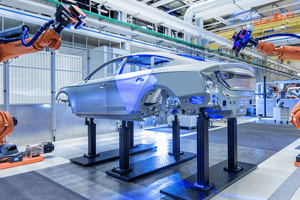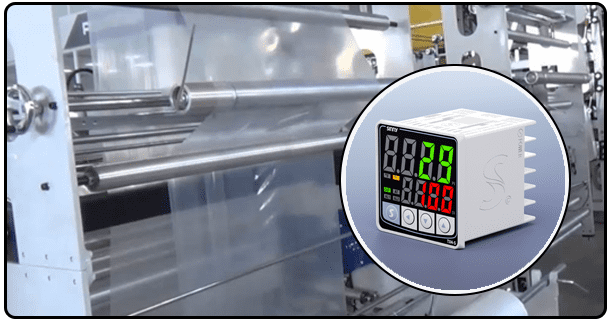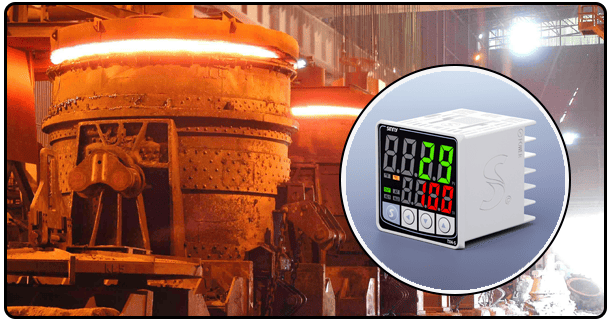Comprehensive guide to temperature PID controller circuits: Design and applications
Discover temperature PID circuits and their components. Learn about working principles, tuning techniques, and applications. This is a must-read book for those who are interested in precision control!
1. Introduction
The control of temperature has been an important aspect of technology innovation for many years. Temperature regulation accuracy is crucial in many fields from industrial processes to devices used every day. One of the most efficient mechanisms for achieving precision in temperature control is the Proportional-Integral-Derivative (PID) controller. This control method can be enhanced by combining it with an electronic system. This article examines the working principles and applications of PID temperature control circuits.
2. The Components in a Temperature-PID Controller Circuit
The temperature PID circuit is made up of several components that play a key role in its smooth operation. They include:
Microcontroller or PID Controller: The brain of the system, it processes input data to determine control actions. Arduino, Raspberry pi, and dedicated PID controllers are all popular choices.
Temperature sensors: Thermocouples, RTDs or LM35 sensor provide precise measurements of a system's temperature.
Actuators Heaters, Coolers or Fans act as output devices for the system, and adjust the temperature in response to control signals sent by the PID.
Power Source: A reliable and stable power supply is essential for the proper operation of all circuits.
Loop Feedback This essential element compares continuously the temperature measured with the setpoint desired, allowing circuits to make adjustments as needed.
The components are carefully selected to match the requirements of each application.
Circuit Design
The components of a PID temperature controller must be integrated into one cohesive system. Here are the main steps:
Diagram Block Representation A typical PID circuit includes a sensor for temperature, a PID unit controller, an actuator and a feedback loop. The sensor measures the temperature. The controller then processes that data. Finally, the actuator changes the system's temperature to the desired level.
Connections and Wiring: The wiring is carefully designed to minimize interference while maximizing efficiency. For sensitive components such as temperature sensors, shielded cable can be used.
Circuit Diagram The circuit may be built on a PCB for permanent use or a breadboard to prototype.
The design phase is the first step in creating a control system that will be robust and effective.
3. Working Principle
This circuit is based on closed loop feedback, which constantly monitors and regulates the system. This is how it works.
The temperature sensor sends data from the controller PID to measure the current temperature.
This value is compared to the Setpoint, and the PID controller calculates any error.
The PID algorithm determines corrective action by adjusting proportional, integral and derivative components.
The actuator will then increase or decrease temperature in accordance with the control signals.
In a heating system, for example, if temperature falls below setpoints, the controller will increase the power of the heater. When the temperature target is achieved, the controller will reduce the output of the heater to ensure stability.
4. Implementation steps
The construction and implementation of a PID temperature controller circuit is a multi-stage process:
Selecting Components Choose components in line with the system's requirements. Select a sensor that has the required precision, and select a compatible microcontroller.
Circuit Assembly : Build the circuit onto a breadboard to test. To avoid any electrical problems, ensure that all the components are connected properly.
Program the controller: Upload the code for the PID algorithm to the microcontroller. Libraries are available on platforms like Arduino IDE that make coding easier.
Test and Optimize: Check the circuit's performance under various conditions. Fine-tune PID parameters to achieve optimal performance.
The step-by-step method minimizes mistakes and makes sure the system achieves its objectives.
5. PID Controller Tuning
Tuning the PID parameters--proportional gain (P), integral time (I), and derivative time (D)--is essential for achieving precise control. Some common methods are:
Ziegler Nichols Tuning : Systematic tuning based on the system's response to setpoint changes or disturbances.
Manual tuning : This involves adjusting parameters in an iterative manner to reduce error and ensure stability.
Tuning ensures that the system will respond appropriately to any changes. This reduces overshoots and settle times.
Application
The temperature PID circuits are used in a variety of situations, including:
Industrial Automation : Manage temperatures during processes such as welding, casting and chemical reactions.
HVAC System: Ensure optimal climate control for buildings and vehicles.
Laboratory equipment: Maintaining exact conditions in incubators, test chambers.
Consumer Electronics : Improve the efficiency of appliances such as ovens and heaters.
PID circuits are indispensable for many applications due to their versatility and reliability.
6. Challenges & Solutions
In spite of their benefits, PID circuits are not without challenges.
Behavior: Non-linear systems may need advanced tuning or additional algorithms.
Inaccuracies in Sensors: A sensor's poor performance may lead to incorrect control action.
Environment Disturbances External factors such as sudden temperature changes can impact system stability.
To address these challenges, you need to select high-quality parts, implement advanced control strategies and perform regular maintenance.
The temperature PID control circuits are a great example of combining engineering with automation. They provide precise, reliable temperature regulation. These systems are able to provide unmatched efficiency in a wide range of applications by leveraging the components and principles they use. The future of PID Control promises greater capabilities as technology advances. It will redefine the limits of precision and control.
- Comprehensive guide to PID temperature controllers: components, design, and applications
- The Design, Tuning and Application Guide for Temperature Control PID























